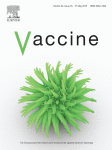Ver ítem
- xmlui.general.dspace_homeCentros e Institutos de InvestigaciónCICVyA. Centro de Investigación en Ciencias Veterinarias y AgronómicasInstituto de PatobiologíaArtículos científicosxmlui.ArtifactBrowser.ItemViewer.trail
- Inicio
- Centros e Institutos de Investigación
- CICVyA. Centro de Investigación en Ciencias Veterinarias y Agronómicas
- Instituto de Patobiología
- Artículos científicos
- Ver ítem
The intranasal vaccination of pregnant dams with Intimin and EspBconfers protection in neonatal mice from Escherichia coli (EHEC)O157:H7 infection
Resumen
Enterohemorrhagic Escherichia coli (EHEC) O157:H7 is responsible for intestinal disease and hemolytic uremic syndrome (HUS), a serious systemic complication which particularly affects children. In this study, we evaluated whether passive immunization protects from EHEC O157:H7 colonization and renal damage, by using a weaned BALB/c mouse model of infection. Recombinant proteins EspB and the carboxyl-terminal fragment of 280 amino acids of γ-intimin (γ-Int
[ver mas...]
Enterohemorrhagic Escherichia coli (EHEC) O157:H7 is responsible for intestinal disease and hemolytic uremic syndrome (HUS), a serious systemic complication which particularly affects children. In this study, we evaluated whether passive immunization protects from EHEC O157:H7 colonization and renal damage, by using a weaned BALB/c mouse model of infection. Recombinant proteins EspB and the carboxyl-terminal fragment of 280 amino acids of γ-intimin (γ-Int C280) were used in combination with a macrophage-activating lipopeptide-2 (MALP) adjuvant to immunize pregnant mice by the intranasal route. Neonatal mice were allowed to suckle vaccinated or sham-vaccinated dams until weaning when they were challenged by the oral route with a suspension of an E. coli O157:H7 Stx2+ strain. The excretion of the inoculated strain was followed for 72 h. All vaccinated dams exhibited elevated serum IgG response against both γ-Int C280 and EspB. Passive immunization of newborn mice resulted in a significant increase in serum IgG titers against γ-Int C280 and a slight increase in EspB-specific antibodies. The neonates from vaccinated dams showed a significant reduction in EHEC O157:H7 colonization 48 h post challenge. In addition, the level of plasma urea concentration, a marker of renal failure, was significantly higher in offsprings of sham-vaccinated mice. In conclusion, vaccination of pregnant dams with γ-Int C280 and EspB could reduce colonization and systemic toxicity of EHEC O157:H7 in their suckling offsprings.
[Cerrar]

Fuente
Vaccine 34 (25) : 2793-2797. (May 2016)
Fecha
2016-05
ISSN
0264-410X
Formato
pdf
Tipo de documento
artículo
Palabras Claves
Derechos de acceso
Restringido
 Excepto donde se diga explicitamente, este item se publica bajo la siguiente descripción: Creative Commons Attribution-NonCommercial-ShareAlike 2.5 Unported (CC BY-NC-SA 2.5)
Excepto donde se diga explicitamente, este item se publica bajo la siguiente descripción: Creative Commons Attribution-NonCommercial-ShareAlike 2.5 Unported (CC BY-NC-SA 2.5)

